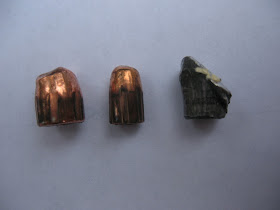The next few posts will be a reprint of a small booklet that I wrote to use in wilderness survival classes. This booklet outlines the things that you need to do to keep from getting into a survival situation to begin with; but if the worst happens, it tells you the things that you need to do to survive for the first 72 hours and the things that you need to do to aid your rescuers in finding you.
WHY 72 HOURS?
The first 72 hours after becoming lost in the wilderness are
the most critical hours. This is the
time period in which the search for a missing person will be the most intense
and the most resources will be brought to bare.
If the lost person can survive for these 72 hours and render some aid to
the searchers, the chances of a successful rescue are high. The purpose of this booklet is to help you,
the victim, survive those all-important first 72 hours, and to provide strategies
for you to help your rescuers locate you in the wilderness.
RULES FOR STAYING FOUND
1. Always let someone know where you are going and when you
expect to be back. Always contact this
person on your return to let them know that you have made it back safely.
2. Always hunt, fish, hike, or camp with at least one
partner; Two partners are better. With
three people, if an injury occurs, one
person can stay with the injured party while the third person goes for help.
3. Always carry a compass and a map of the area that you
will be in. Learn how to use map and
compass before you go into the wilderness.
4. Always take a compass reading before you leave the
trailhead.
5. Always leave yourself plenty of time to return from the
wilderness. Don't get caught unprepared
by the sunset.
6. If you have a cell
phone, make sure that it is fully charged and take it with you. Even if it doesn't work in the wilderness;
you may need it to call for assistance when you get in range of a cell tower.
7. If you have a GPS unit, be sure that you know how to
operate it before you go into the wilderness.
THINGS TO TAKE WITH YOU
At a bare minimum always take the following with you into
the wilderness.
1. Leatherman tool or Swiss Army Knife
2. matches or cigarette lighter
3. whistle
4. compass
5. relfective Mylar solar blanket
6. quart canteen or water bottle filled with fresh water
7. small bottle of insect repellant (according to season)
8. small bottle of sun screen (according to season)
Better yet, take all of the above plus a wilderness survival
kit equipped with the following:
1. small mirror
2. magnifying glass
3. 15' of small gauge snare wire
4. small bottle of water purification tablets
5. 1 quart zip-lock freezer bag (for emergency canteen
6. 2 needles
7. a pair of tweezers
8. 3 Band-Aids
9. 6 Tylenol tablets
10. 2 Benadryl tablets
11. 6 small fishhooks
12. 6 split shot fishing weights
13. 20' of monofilament fishing line
14. another cigarette lighter or waterproof matches
15. a candle stub or emergency fire starter.
THE RULE OF THREE
A human can survive approximately 3 minutes without oxygen
A human can survive loss of body heat for approximately 3
hours
A human can survive approximately 3 days without water
A human can survive approximately 3 weeks without food.
WHEN YOU REALIZE THAT YOU'RE LOST
STOP! Sit down in a
comfortable place, take a long drink of water, and breath deeply through your
nose. This will help fight off the panic
that sometimes occurs when we find ourselves lost or disoriented. Analyze your situation. Stay where you are. It will be easier for rescuers to find you if
you are not on the move. Take a compass
reading. Just knowing where north,
south, east, and west are is a powerful psychological boost to a disoriented
person. How late in the day is it? Will you be in the woods overnight? Now think about the rule of three. You have oxygen to breath, so you don't have
to worry about that. You can survive
without food for 3 weeks, so that's not a problem. You should have a near full canteen or water
bottle, so dehydration is not an immediate threat. Your main concern, if night is approaching,
is to avoid the loss of your body's core heat.
Loss of core body heat, called hypothermia is
the most common cause of death for those who are lost in the
wilderness. If you are exhausted, if you
are wet, and if the wind is blowing; you can become hypothermic when the air
temperature is as high as 55 degrees Fahrenheit. So let's take care of the body heat problem
first.









































